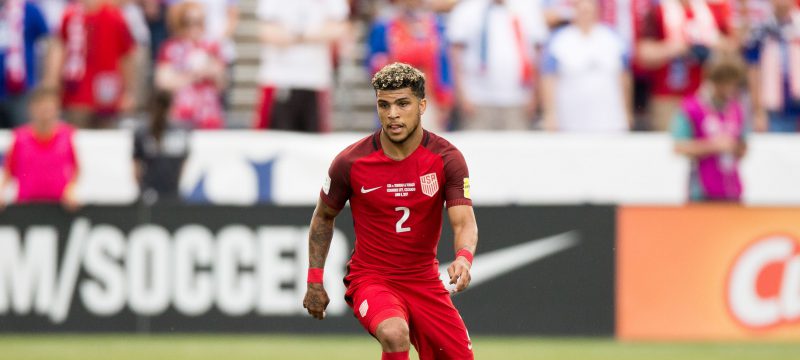The old saying states that a team is only as good as its spine and, generally speaking, that is true. Especially in the international level, you’re not going anywhere without talent down the middle. You need to be able to control the center of the field from the defense all the way to the forward up top.
That said, the difference between solid and good generally comes down to wide play and the ability to stretch the field. That’s certainly true for the U.S. Men’s National Team as well. After September qualifiers exposed a relative weakness out wide, the USMNT will need to show something a bit different heading into vital matches against Panama and Trinidad & Tobago.
Starting from defense, we know an answer to at least one question: who will play at right back? After seeing Graham Zusi burned for pace several times in recent matches, DeAndre Yedlin’s speed and athleticism will be a welcome boost to the USMNT. Against athletic teams like Panama and T&T, Yedlin’s speed adds another dimension to both the defense and the attack, and that should keep the opposition honest down the right hand side.
In front of him, the U.S. has generally gone with Christian Pulisic in the right wing position, but that idea is still certainly up for debate. The Borussia Dortmund winger was suffocated against Costa Rica, rendering him relatively ineffective. Playing Pulisic centrally could maximize his influence, even if it isn’t his best position. If that’s the idea, Arena could put Paul Arriola out on the right as the D.C. United winger has shown well in recent USMNT efforts. There’s also someone like Alejandro Bedoya or even Darlington Nagbe, although the former is a better fit centrally while the latter could play either down the middle or on the left.
The left, in many ways, is the problem side. The exclusion of Fabian Johnson takes away a potential option either at left back or left midfield while Gyasi Zardes’ injury takes away another potential starter. Say what you want about Zardes, but his work rate is virtually unmatched in the USMNT pool, and that makes him an asset in certain situations. He may not be the most technical player, but he fills a need.
At left back, Arena has limited options, and it appears he’s set to go all-in with Jorge Villafana for the time being. DaMarcus Beasley showed his age against Honduras and doesn’t seem to be a viable option against teams like Panama or T&T. Villafana may not be a burner either, but he’s the USMNT’s go-to option right now.
Left wing is interesting as well. Nagbe could certainly play the role as he has with the Portland Timbers throughout the team’s run through the West, but his playmaking ability and skill on the ball could also be an asset centrally as part of a 4-4-2 if Pulisic is kept out wide. Bobby Wood could play on the left side of a 4-3-3 if need be, even if it isn’t his best spot.
Now, this could also all be shaken up by a tactical switch, one which worked very well against Honduras and Mexico. It wouldn’t be a surprise to see the U.S. go with a three-at-the-back formation, especially given the wealth of centerback options. It allows Yedlin to bomb forward on the right side with a bit more freedom which could help ignite mismatches down that side. The switch to a 3-5-2 against Honduras changed the game, and it might just be the formation that best fits this USMNT.
On the left, Arena opted for Beasley back when he used the same formation against Mexico to start the summer, but it remains to be seen if he can go a full 90. Villafana has shown an ability to get into the attack at times while Arriola has played as a right wing back and is comfortable on the left, making him an option on either side as well.
Regardless of what formation or tactics Arena goes with the USMNT will face battles out wide. Panama has a talented central midfield, making it vital the U.S. stretches the game. At the Gold Cup, Panama was unconcerned by the U.S. due to a lack of speed, and it will be vital to unleash that speed and pin the Canaleros deep for large stretched. Speed will also be vital against a T&T team that will be looking to punish the U.S. on the counter.
Knowing that, the wide players, whoever they may be, will have to step up. It was an area of struggle for the USMNT last time around, but the U.S. will need to find some answers there to navigate October’s matches.

